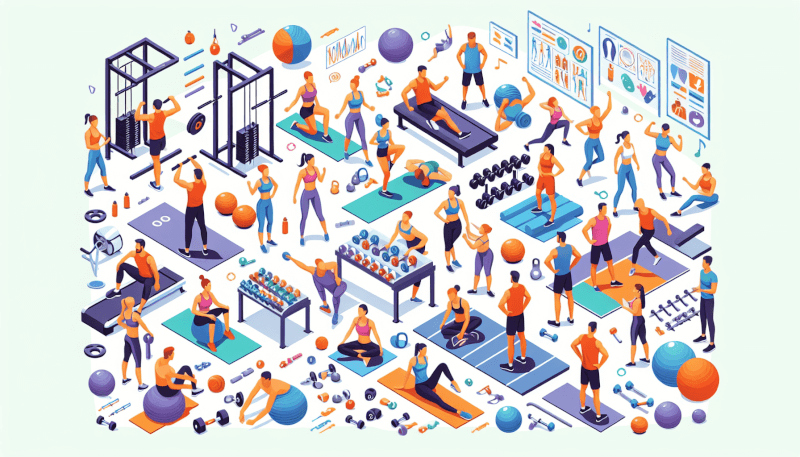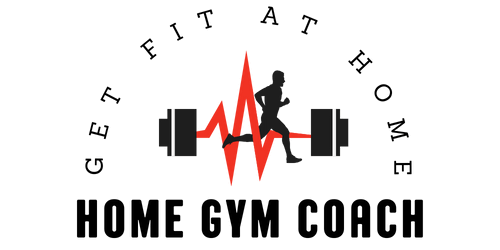Are you tired of following generic workout plans that don’t cater to your specific fitness goals? It’s time to take control of your fitness journey and create your own custom workout plan. This article will guide you through the necessary steps to design a workout routine that is tailored to your needs and preferences. Say goodbye to cookie-cutter workouts and hello to a personalized fitness regimen that will keep you motivated and excited to hit the gym. Let’s get started on creating your very own custom workout plan!

Choosing Your Fitness Goals
Identify your specific fitness goals
When choosing your fitness goals, it’s important to be specific about what you want to achieve. Do you want to lose weight, gain muscle, improve cardiovascular endurance, or enhance flexibility? Identifying your specific goals will help you create a focused workout plan tailored to your needs.
Consider your current fitness level
Before diving into a new workout plan, it’s crucial to assess your current fitness level. This will help you determine the starting point of your journey and set realistic expectations. Take into account factors such as your strength, endurance, and overall health. Recognizing your current abilities will guide you in choosing appropriate exercises and determining the intensity of your workouts.
Determine the time commitment you can make
Time is often a limiting factor when it comes to fitness goals, but it’s important to set aside dedicated time for your workouts. Consider your daily schedule and commitments to determine how many days per week you can devote to exercise and how much time you can allocate to each session. Being realistic about your time commitment will aid in creating a sustainable workout plan.
Assessing Your Strengths and Weaknesses
Evaluate your cardiovascular endurance
Cardiovascular endurance is a measure of how efficiently your heart and lungs can supply oxygen to your muscles during physical activity. To assess your endurance, you can perform exercises like jogging, cycling, or using an elliptical machine and monitor factors such as your heart rate and how quickly you become fatigued. This evaluation will help you gauge your starting point and track your progress throughout your fitness journey.
Assess your muscular strength and endurance
Muscular strength refers to your ability to exert force, while muscular endurance is the capacity to perform repetitive movements over a period of time. To evaluate your strength, you can use exercises like push-ups, squats, or lifting weights. Pay attention to how much weight you can handle and how many reps you can complete before reaching fatigue. This assessment will assist you in designing strength-focused workouts and tracking your gains.
Consider your flexibility and balance
Flexibility and balance are often overlooked but are essential for overall fitness. Assess your flexibility by trying various stretches and movements that target different muscle groups. Observe your range of motion in joints and muscles. For balance, practice standing on one leg or perform exercises like yoga or Pilates. Understanding your flexibility and balance will guide you in incorporating exercises that improve these areas.

Designing Your Workout Schedule
Determine the optimal frequency of workouts
Finding the right balance between rest and exercise is crucial for progress and injury prevention. Consider factors such as your fitness goals, current fitness level, and time availability when determining how often to work out. Aim for at least three to five sessions per week, allowing for a day or two of rest in between each workout. This frequency will give your body the necessary time to recover and adapt to the physical stress.
Decide on the duration of each workout session
The duration of your workout sessions will depend on your goals and available time. For general fitness and health, aim for sessions that last around 30 to 60 minutes. If your goal is weight loss, consider longer sessions to increase calorie burn. Keep in mind that quality and intensity are more important than simply extending the duration of your workouts, so focus on efficient and effective exercises that target your desired outcomes.
Choose the best time of day for your workouts
Finding the optimal time to exercise is a personal preference that can vary depending on factors like work schedule, energy levels, and sleep patterns. Some people prefer early morning workouts to kickstart their day, while others find their energy peaks in the afternoon or evening. Experiment with different times of day to determine when you feel most motivated, energized, and able to commit to your workouts consistently.
Selecting the Right Exercises
Include exercises that target your specific goals
To create a well-rounded workout plan, select exercises that align with your specific fitness goals. For weight loss, incorporate cardio exercises like running, swimming, or cycling along with strength training to build lean muscle. If muscle gain is your aim, focus on compound exercises like deadlifts, squats, and bench presses that work multiple muscle groups simultaneously. Tailor your exercises to suit your goals and adjust them as needed as you progress.
Choose exercises that suit your preferences and abilities
To maintain motivation and consistency, it’s crucial to choose exercises that you enjoy and that align with your abilities. If you dislike running, opt for activities like dancing, kickboxing, or hiking to get your heart rate up. Consider incorporating activities that you find fun and engaging, as this will make it more likely for you to stick with your workout plan in the long run.
Incorporate a variety of exercises to avoid boredom
Doing the same exercises day in and day out can lead to boredom and decreased motivation. To keep your workouts enjoyable and effective, include a variety of exercises that target different muscle groups and provide different types of challenges. This can include switching up cardio exercises, trying new strength training moves, or incorporating activities like swimming or yoga. Variety not only keeps things interesting but also ensures you engage different areas of the body and prevent overuse injuries.

Progression and Periodization
Gradually increase the intensity or load over time
As your fitness improves, it’s essential to progressively challenge your body to continue seeing results. Gradually increase the intensity or load of your exercises by adding more weight, doing more reps, or increasing the duration or intensity of your cardio sessions. This progressive overload stimulates the body to adapt and become stronger, allowing you to continually progress toward your fitness goals.
Implement periodization to prevent plateaus
Periodization involves dividing your workout plan into distinct phases or cycles, each with a specific focus and intensity level. By incorporating different training methods, such as strength, endurance, and power training, you can prevent plateaus and continuously challenge your body. Periodization also allows for planned rest and recovery periods, reducing the risk of overtraining and injuries while maximizing performance gains.
Allow for appropriate rest and recovery periods
Rest and recovery are crucial components of any effective workout plan. Without sufficient rest, your body may not have time to repair and rebuild, leading to decreased performance and increased risk of injury. Schedule regular rest days and listen to your body’s cues for adequate recovery. This may include incorporating lower-intensity workouts, active recovery activities, or indulging in techniques such as foam rolling or self-massage to alleviate muscle tension and soreness.
Formulating Warm-up and Cool-down Routines
Include dynamic stretches and mobility exercises in your warm-up
A proper warm-up routine is essential to prime your body for exercise, increase blood flow to your muscles, and prevent injuries. Include dynamic stretches and mobility exercises that target the muscles you will be using during your workout. This can include exercises like arm circles, leg swings, or high knees. Warm-up sessions also offer an opportunity to mentally prepare for your workout and enhance focus and performance.
Incorporate static stretches for flexibility during the cool-down
After completing your workout, it’s important to cool down gradually to bring your heart rate and body temperature back to baseline. Incorporate static stretches that focus on the muscles you worked during your workout. Hold each stretch for 15 to 30 seconds, allowing your muscles to relax and improve flexibility. Cool-down stretches can also aid in reducing post-workout muscle soreness and tightness.
Implement foam rolling or self-massage techniques
Foam rolling or using self-massage techniques with tools like lacrosse balls or massage sticks can be beneficial additions to your warm-up or cool-down routines. These techniques help release muscular tension, improve circulation, and increase range of motion. When using a foam roller or other self-massage tools, focus on areas of tightness and discomfort, applying gentle pressure and rolling back and forth. Utilizing these techniques can help alleviate muscle knots and promote quicker recovery.

Monitoring and Adjusting Your Plan
Track your progress and make necessary adjustments
Monitoring your progress is essential to evaluate the effectiveness of your workout plan and make necessary adjustments. Keep a record of your workouts, noting the exercises performed, sets, reps, and weights used. Additionally, track other relevant measurements such as body weight, body fat percentage, and body measurements. Regularly review and analyze this data to identify patterns, areas for improvement, and make changes to your plan as needed.
Listen to your body and modify the plan accordingly
While it’s important to stick to your workout plan, it’s equally crucial to listen to your body and modify or adapt as necessary. If you’re feeling excessively fatigued or experiencing pain or discomfort, it’s essential to take a step back and adjust your plan accordingly. This may involve reducing workout intensity, incorporating more rest days, or seeking professional guidance. Remember, your body’s needs can vary, so be flexible and responsive to avoid burnout and prevent injuries.
Consider seeking professional guidance if needed
If you’re unsure about designing your own workout plan or want expert advice, consider seeking professional guidance. Certified personal trainers can provide personalized programs tailored to your goals and abilities. They can also ensure proper form and technique to prevent injuries. Additionally, nutritionists or dietitians can offer guidance on fueling your body appropriately, supporting your fitness goals through proper nutrition. Taking advantage of technology and fitness apps can also provide structure and guidance for your workouts.
Establishing Realistic and Sustainable Goals
Set achievable short-term and long-term goals
When setting fitness goals, it’s crucial to be realistic and break them down into achievable short-term and long-term targets. Short-term goals can provide a sense of accomplishment and motivation as you progress, while long-term goals keep you focused on the bigger picture. Ensure your goals are specific, measurable, attainable, relevant, and time-bound (SMART goals) to maintain clarity and track progress effectively.
Ensure your plan aligns with your lifestyle and commitments
For a workout plan to be successful, it needs to align with your lifestyle and commitments. Consider factors such as work schedule, family obligations, and personal preferences when designing your plan. If you don’t enjoy early mornings, don’t force yourself to work out at that time. Find a schedule and routine that fits seamlessly into your life, making it easier to maintain consistency and adherence.
Focus on overall health and well-being rather than just appearance
While aesthetic goals are common, it’s essential to prioritize overall health and well-being in your fitness journey. Instead of solely focusing on appearance-related outcomes, consider factors such as improved energy levels, mental well-being, and functional fitness. This holistic approach allows you to cultivate a positive and sustainable relationship with exercise and motivates you to embrace a healthy lifestyle beyond just physical changes.

Staying Motivated and Accountable
Find a workout buddy or join a fitness community
Workout buddies or being part of a fitness community can significantly boost motivation and accountability. Having a friend or a group to exercise with creates a supportive environment and makes workouts more enjoyable. You can encourage and challenge each other, celebrate achievements together, and hold each other accountable to stick to your workout plan.
Reward yourself for reaching milestones
Celebrate your progress and reward yourself for reaching milestones along your fitness journey. Set up a reward system for accomplishing specific goals, such as treating yourself to a massage, buying new workout gear, or enjoying a day off. These rewards serve as positive reinforcement, boosting motivation, and making your workouts feel more rewarding.
Keep track of your achievements and celebrate them
Maintaining a record of your achievements is a powerful way to stay motivated. Keep a journal or use a fitness tracking app to log your workouts, note your progress, and celebrate milestones. Seeing how far you’ve come can be incredibly inspiring and remind you of your capabilities. Share your achievements with friends and family for additional support and encouragement.
Seeking Professional Guidance
Consult with a certified personal trainer
If you’re unsure about designing your own workout plan or want guidance tailored to your specific needs and goals, consider consulting with a certified personal trainer. Trainers have the expertise to assess your abilities, create personalized workout programs, and ensure proper form and technique. They provide motivation, support, and accountability, making your fitness journey more effective and enjoyable.
Consider hiring a nutritionist or dietitian
Nutrition plays a vital role in achieving fitness goals. Consider hiring a nutritionist or dietitian who can assess your dietary needs, develop an appropriate meal plan, and offer guidance on fueling your body efficiently. They can help you make healthier choices, optimize your nutrient intake, and support your fitness efforts through proper nutrition.
Take advantage of technology and fitness apps
Technology and fitness apps can be valuable tools in creating and managing your custom workout plan. Explore various apps that offer workout routines, tracking features, and educational resources. You can find apps that cater to different goals, fitness levels, and preferences. These tools can provide structure, motivation, and guidance to support your fitness journey.


